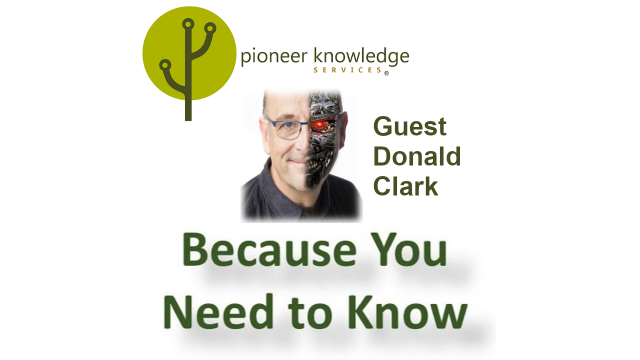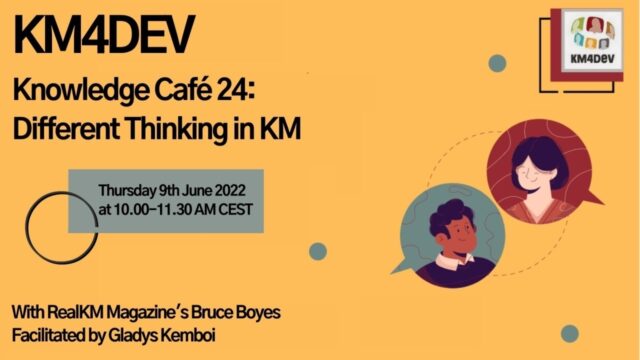
We have already tried that!
How often do you hear “We have already tried that” in an organization? This is a phrase too often heard in knowledge management (KM). Organizations remember if they have tried something and it failed. They often do not try to fix the issues that failed but rather blame the whole process.
Failure is a chance to learn
Soichiro Honda said that “My biggest thrill is when I plan something and it fails. My mind is then filled with ideas on how I can improve it.” He was the first Japanese car manufacturer to be inducted into the Automobile Hall of Fame, but it wasn’t all smooth sailing. For more than four decades he battled with failures, adversities, and bankruptcy, even rejection from Toyota.
Henry Ford is quoted as saying, “Failure is simply the opportunity to begin again, this time more intelligently.” Certainly, Edison would agree. You’ve just learned all the wrong ways toward that particular success, as Edison did with his “ten thousand” wrong attempts. Every lesson learned, every failure, is a movement in the right direction.
On the other hand, in today’s drawdown U.S. Army, many are becoming “zero defect” non-commissioned officers (NCOs). This is seen as a dangerous trend1:
It’s not unreasonable that in a downsizing environment we fear the effect of being labeled as a failure. We also fear being labeled as indulgent of failures. Not being able to deal with soldiers who fail has a chilling effect on mission accomplishment. A leader must strike a balance between failure and success in every soldier and every mission.
Many failed projects have lingered on in the memory of an organization. This often causes pain points for the knowledge manager trying to fix issues. Instead of finding out how it failed, the project is abandoned. Projects fail on multiple points rather than singular. This is due to the nature of people, processes, tools, and the organization.
A knowledge manager needs to train in change management and understand these four areas of failure. The knowledge manager needs to look at past failures to identify the issues. “Why” is the most powerful word a knowledge manager can utilize. Identifying an issue and tracking it on “why” it failed is the quickest way to identify changes in the change management process.
After Action Reviews (AARs)
The U.S. Army has an entire program designed to study previous lessons and adapt those for future missions. This is called an After Action Review (AAR). This is so ingrained in Army culture that after each program they start a review of that activity. It is a no-blame approach to study:
- What was expected to happen?
- What actually occurred?
- What went well and why?
- What can be improved and how?
Useful resources to assist in understanding and facilitating AARs are:
- How to Conduct an After Action Review3 from the U.S. National Police Foundation
- After-Action Review Technical Guidance4 from USAID
- Electronic Health Record Comprehensive Lessons Learned5 from the U.S. Department of Veterans Affairs, which is a study following the format of the Army’s AAR
- Getting the most from after action reviews to improve global health security6 which builds on World Health Organization (WHO) guidance for voluntary AARs by reviewing evidence on the effectiveness of AARs as tools for system improvement and by summarizing some key lessons about ensuring that AARs result in meaningful learning from experience.
Four areas of failure: people, processes, tools, and the organization
Understanding these four areas of failure is critical to facilitating change in the failure rate:
- People can be a training, knowledge expert, culture, staffing, or management issue.
- Processes can be fixed by understanding what the side effects of people on the whole process from start to finish.
- Tool issues most always stem from a training problem. They can also stem from the length of production and testing. The tool must be simple and reduce the workload of the individuals utilizing it. If it causes problems, these need to be ironed out before launch. The individuals in this scenario are both internal and external customers. If a tool interfaces with both internal and external customers, priority is set upon the external customer. One such example is when someone loads a resume and then fills out the same exact information into your tool. This will turn off some clients, causing a loss in engagement.
- The last area is the organization. Does your whole team try to get to a “yes” point, or do they often say “no”? This is evident in the support side. If the queue to get to speak to a customer service representative is over an acceptable amount, does the phone start ringing in the manager’s office or other support levels? Too often, the amount of time a customer sits on hold is the difference between a repeat customer or a loss.
Another newer problem is the organization’s stance on emerging trends. What does an organization do to the brand if it jumps on the latest trends? These changes can cause issues with existing employees and customers. Just because it is a “hot” topic, does it necessitate change?
Once these areas have been examined, the knowledge manager can help fix the identified problem issues. Processes can be examined and planned with different results. Remember, we are in the “yes” department and our abilities can be applied to help overcome negative issues.
Header image source: Created by RealKM Magazine from Varan Varan on Pixabay and OpenClipart-Vectors on Pixabay, Public Domain.
References:
- Clifford, J.H. (1997). Dealing with Failure. NCO Journal, Spring 1997. ↩
- Salem-Schatz, S., Ordin, D., & Mittman, B. (n.d.). Guide to the After Action Review. Using Evaluation to Improve Our Work: A Resource Guide. ↩
- National Police Foundation. (2020). How to Conduct an After Action Review. Washington, DC: Office of Community Oriented Policing Services. ↩
- USAID. (2006). After-Action Review Technical Guidance. Washington, DC: U.S. Agency for International Development (USAID). ↩
- Veterans Affairs. (2021). Electronic Health Record Comprehensive Lessons Learned. Washington, DC: U.S. Department of Veterans Affairs. ↩
- Stoto, M. A., Nelson, C., Piltch-Loeb, R., Mayigane, L. N., Copper, F., & Chungong, S. (2019). Getting the most from after action reviews to improve global health security. Globalization and Health, 15(1), 1-10. ↩






